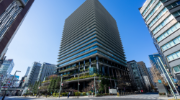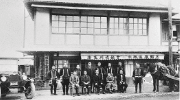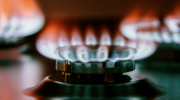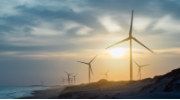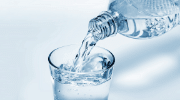Environmental
risk management
m-sbAnchor__link
Response to climate change and natural disasters
Climate change initiatives
The Group is developing a variety of businesses to realize a low-carbon society.LPG is a form of distributed energy that is environmentally friendly and is portable.We are also promoting the spread of energy products, such as solar power generation systems, lithium-ion batteries, and residential-use fuel cells, that are helpful for people’s lifestyles today and for the global environment of the next generation.Furthermore, through the creation of renewable energy, we are working to contribute to the improvement of the global environment through reducing CO2 emissions and improve energy self-sufficiency.
Response to natural disasters
While LPG is a form of distributed energy that is easy to install and restore even when natural disasters linked to climate change occur, such as torrential downpours and storm surges, it is possible for filling stations to be damaged and for its transportation to be delayed or slowed. In preparation for emergencies, we have implemented disaster prevention measures at facilities such as filling stations and have also formulated a business continuity plan (BCP). The LPG supply network is rationally designed to ensure a steady supply of LPG to every corner of the country in times of peace and even in times of disaster.
In addition, while we continue to upgrade our operations and make them efficient at Mitsuuroko Administration Center (Saitama-shi, Saitama), a shared services division that consolidates the operations of the Group companies, which the Nagano Office of Mitsuuroko Administration Center opened in order to avoid the risk of interruption in our operations when struck by disaster, etc. due to centralization, and to establish a system to ensure the continuation of operations in the event of an emergency.
We have established a system that allows us to shift to pre-determined operations in an emergency by activating the BCP program if it becomes impossible to carry out operations in Saitama-shi.
m-sbAnchor__link
Water risk initiatives
Basic approach
We consider water risk to be an important management issue and are taking actions such as water stress/risk studies, and water hazards and water management.
Implementation of water stress/risk studies
Using the WRI Aqueduct, an international indicator, we comprehensively analyzed and evaluated current and future risks (water demand, water source security, water damage, etc.). As a result, we confirmed that there is no significant water stress or risk in the Group’s main facilities as of now.
Water consumption, water discharge volume, and water quality control
In order to use water resources sustainably, we monitor water consumption and strive to save water, and also implement appropriate wastewater management. In FY2021, there were no violations of standards and regulations pertaining to water discharge.
Situation of water resources utilization
In FY2021, Group-wide use of domestic freshwater resources (water supply and wells) totaled 6,454 thousand m3, and the amount discharged to underground and rivers (excluding sewage) was 647 thousand m3.
Initiatives to reduce water usage
Preserving water resources through the use of business cards made primarily from limestone
From the viewpoint of conserving forests and water resources, the Group has adopted the use of business cards made with “LIMEX,” a material derived primarily from limestone. Limestone exists in abundance throughout the world and is a mineral resource which Japan is completely self-sufficient in and can obtain at a low cost. By adopting limestone as the main material for our business cards, we are contributing to the preservation of forests and water resources, which are essential for the production of paper. This initiative saves 10 liters of water per card box of business cards (100 cards). When converted to the number of business cards used by the Group, this equates to 23,230 liters of water preserved in a year.
Water-saving initiatives
In the wellness business, we are working to reduce bathing water used at “Yokohama Tennen Onsen SPA EAS” through the use of a recovery tank (water supply and natural spring water) timer control and water-saving devices installed in all shower heads. We are also reducing other water used at the facility through measures such as the introduction of water-saving toilets, and employees are also making efforts to save water.
We are also promoting the introduction of water-saving showers and toilets in rental apartments owned by our real estate business.
m-sbAnchor__link
Management of chemicals and contaminants
Since our operations have little relevance to emissions of air pollutants such as VOCs, NOx, and SOx, we do not perform measurements for these. Waste, including hazardous waste, is properly disposed of through specialized waste disposal companies in accordance with laws, regulations, and other rules. In FY2021, there were no penalties or fines related to environmental laws and regulations (Air Pollution Control Act, Water Pollution Prevention Act, Soil Contamination Countermeasures Act, Waste Management and Public Cleansing Act, etc.) due to outflows or excess emissions of environmental pollutants.
m-sbAnchor__link
Response to soil contamination
In the event that pollution is detected at LPG filling stations and gasoline service stations, while we report such incidents to the relevant government agencies and actively disclosing information to the public, such as through explanations to residents within the vicinity or press releases, we work to control soil contamination. In accordance with the state of the pollution, we employ measures such as excavation, removal, and paving to prevent contamination from spreading or entering ground water.
- TOP
- SUSTAINABILITY
- E(Environment)
- Environmental risk management


